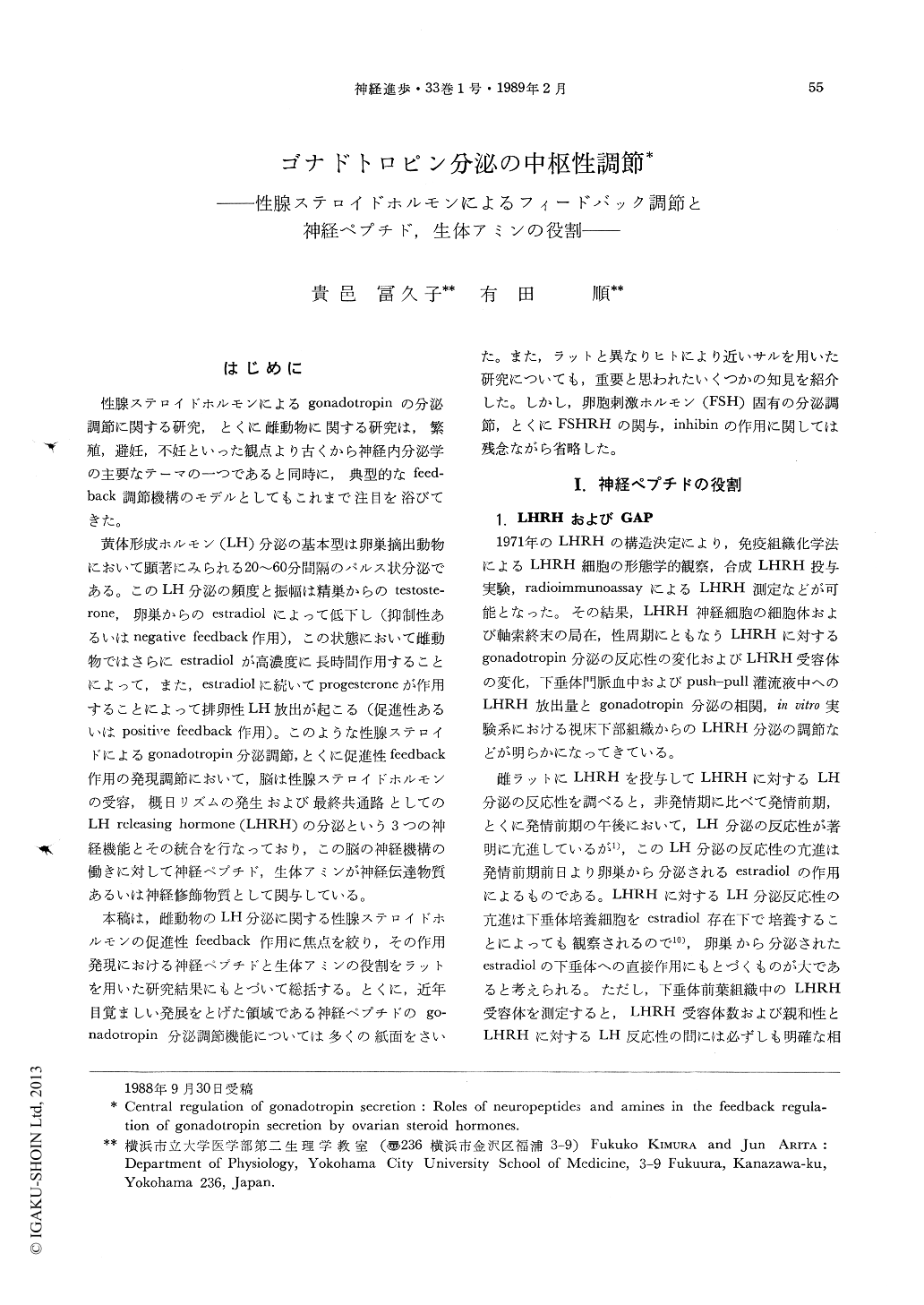Japanese
English
- 有料閲覧
- Abstract 文献概要
- 1ページ目 Look Inside
はじめに
性腺ステロイドホルモンによるgonadotropinの分泌調節に関する研究,とくに雌動物に関する研究は,繁殖,避妊,不妊といった観点より古くから神経内分泌学の主要なテーマの一つであると同時に,典型的なfeedback調節機構のモデルとしてもこれまで注目を浴びてきた。
黄体形成ホルモン(LH)分泌の基本型は卵巣摘出動物において顕著にみられる20〜60分間隔のパルス状分泌である。このLH分泌の頻度と振幅は精巣からのtestosterone,卵巣からのestradiolによって低下し(抑制性あるいはnegative feedback作用),この状態において雌動物ではさらにestradiolが高濃度に長時間作用することによって,また,estradiolに続いてprogesteroneが作用することによって排卵性LH放出が起こる(促進性あるいはpositive feedback作用)。このような性腺ステロイドによるgonadotropin分泌調節,とくに促進性feedback作用の発現調節において,脳は性腺ステロイドホルモンの受容,概日リズムの発生および最終共通路としてのLH releasing hormone(LHRH)の分泌という3つの神経機能とその統合を行なっており,この脳の神経機構の働きに対して神経ペプチド,生体アミンが神経伝達物質あるいは神経修飾物質として関与している。
The secretion of gonadotropin from the anterior pituitary gland is regulated by feedback actions of ovarian and testicular steroid hormones such as estradiol, progesterone and testosterone. In addition to their negative feedback actions on gonadotropin, estradiol and progesterone exert positive feedback actions to induce ovulatory surges of gonadotropin secretion in female animals. In the regulation of these positive feedback actions, the brain, in particular, the hypothalamus plays important roles which involve the reception of ovarian hormones, generation of circadian rhythms, secretion of luteinizing hormone releasing hormone (LHRH) and integration of these three functions. Furthermore, a variety of neuropeptides and amines has been suggested to be involved as neurotransmitters or neuromodulators in the brainfunctions for the regulation of the positive feedback actions. In this review, we have discussed how the neuropeptides and amines are involved in the regulation of positive feedback actions of ovarian hormones on the basis of results obtained from studies using the rat.

Copyright © 1989, Igaku-Shoin Ltd. All rights reserved.


